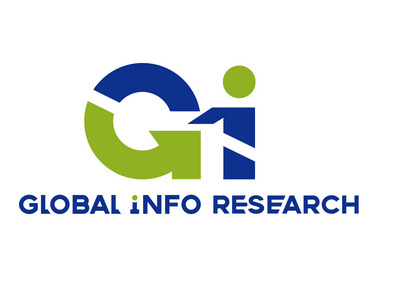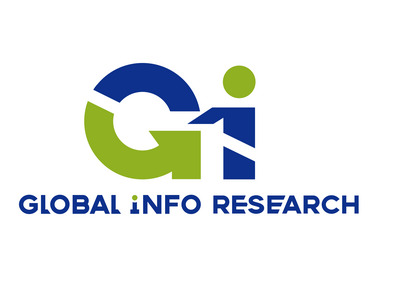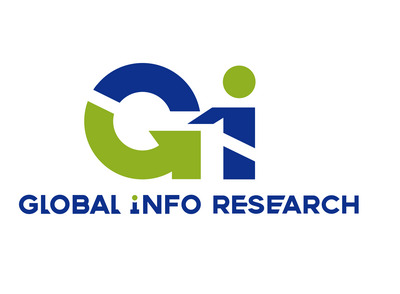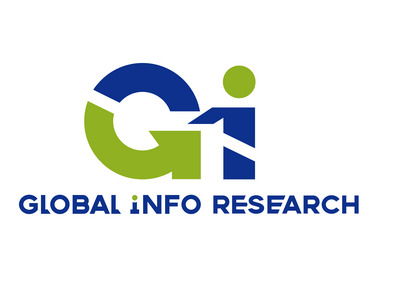
Omni Directional HF Antenna Market Report 2025
Global Info Research‘s report is a detailed and comprehensive analysis for global Omni Directional HF Antenna market. Both quantitative and qualitative analyses are presented by manufacturers, by region & country, by Type and by Application. As the Omni Directional HF Antenna market is constantly changing, this report explores the competition, supply and demand trends, as well as key factors that contribute to its changing demands across many markets. Company profiles and product examples of selected competitors, along with market share estimates of some of the selected leaders for the year 2025, are provided.
According to our (Global Info Research) latest study, the global Omni Directional HF Antenna market size was valued at US$ 151 million in 2024 and is forecast to a readjusted size of USD 209 million by 2031 with a CAGR of 4.7% during review period.
In this report, we will assess the current U.S. tariff framework alongside international policy adaptations, analyzing their effects on competitive market structures, regional economic dynamics, and supply chain resilience.
In 2024, global annual sales of omni-directional HF antennas will reach approximately 308,000 units, with an average unit price of approximately US0 per unit and an industry average gross profit margin of approximately 36%–40%. Prices will increase with power. These antennas are broadband communications antennas that provide omnidirectional, 360° coverage in the 2–30 MHz high frequency band. Typical designs utilize vertical monopole or multi-element array structures, achieving compact size and a stable standing wave ratio through electrical shorting or inductive loading. Their radiation efficiency typically exceeds 70%, making them suitable for land-based command communications, shipborne platforms, long-range shortwave broadcasting, and disaster emergency response systems. The power level of a single system typically ranges from 1 to 20 kW, influenced by a combination of frequency and antenna height. For 2–14 MHz, an 82-foot antenna has an average power of 1 kW, while for 3–21 MHz, a 52-foot antenna has an average power of 5 kW. They support both ALE (Automatic Link Establishment) and NVIS (Near Vertical Incidence) modes. The main upstream raw materials include silver-plated copper conductors, composite insulating rods, Teflon feeders, inductor matching components, and weather-resistant coatings, with raw material costs accounting for approximately 50% of the total system cost. Downstream customers primarily include military and defense communications agencies, maritime communications system providers, and government emergency response departments. Core manufacturer Alaris Antennas has an annual production capacity of approximately 40,000 units in South Africa, covering multi-band omnidirectional antenna production lines from HF to UHF. It also possesses integrated manufacturing capabilities for composite lightning protection packaging and broadband electrical matching.
Supply Situation
Upstream raw materials primarily include high-strength anodized aluminum components, silver-plated copper conductors, PTFE insulation, carbon fiber composite housings, and corrosion-resistant epoxy coatings. Raw material costs account for approximately 50% of the total system cost. Typical suppliers include Alcoa, Molex, DuPont, 3M, and Laird Performance Materials.
Manufacturer Features
Alaris Antennas specializes in military and shipborne omnidirectional HF antennas, with an annual production capacity of approximately 40,000 units. Kratos Space is widely used in ground measurement and control and tactical communications projects. Creative Design and Antenna Experts supply a variety of shortwave and maritime communication antennas to the European market. Antenna Products has an annual production capacity of approximately 28,000 units, primarily serving US military HF systems and defense OEM customers.
Applications
The military and defense communications sector accounts for the largest share, with clients including global core defense and aerospace companies such as Lockheed Martin, Raytheon, Thales Group, BAE Systems, and China Aerospace Science and Industry Corporation. In the maritime and shipborne communications sector, partners include maritime-related organizations and companies such as the US Navy, Japan Maritime Self-Defense Force, MSC, and Navantia. In the emergency and civil defense communications systems sector, services are provided to emergency communications equipment suppliers such as Motorola Solutions, Rohde & Schwarz, Tait Communications, and Codan. In the fixed and remote broadcast link sector, clients include global broadcasting and television transmission organizations such as BBC Transmission, Deutsche Welle, Voice of America, and CCTV Transmission. Scientific research and meteorological ionospheric monitoring account for a smaller share, with primary clients including scientific research and meteorological organizations such as NASA, NOAA, ESA, and DLR. These five sectors together constitute a diversified market structure.
Technology Trends
Omnidirectional high-frequency antennas are evolving towards broadband, intelligent tuning, and low-impedance matching optimization. New-generation models generally integrate automatic antenna tuners (ATUs), supporting full-band coverage from 1.5 to 30 MHz. Some products incorporate carbon fiber-reinforced resin and lightweight conductive coatings to achieve weight reductions of over 30% and enhanced weather resistance. Electronically controlled tuning algorithms, SDR linkage interfaces, and digital fault diagnosis are becoming mainstream features. Future trends include the use of AI algorithms for automatic matching optimization, wideband loop feeds to improve omnidirectional consistency, and the integration of radomes and the entire system in shipborne applications to reduce maintenance requirements.
Market Influencing Factors
This market growth is primarily driven by fixed HF communication networks and military renewal programs. While satellite communications have replaced shortwave links in some scenarios, HF systems remain indispensable for long-distance, extreme weather, and satellite-denied environments, creating a stable "strategic communications bottom-line market." Fluctuations in upstream copper and composite material prices significantly impact manufacturing costs, while the budgetary dynamics of downstream defense and government communications departments directly determine order cycles. Overall, although the omnidirectional HF antenna market is mature, it will continue to maintain steady demand in the defense, maritime and emergency communications fields due to its reliability and independence, presenting a long-term pattern of low growth but high stability.
This report is a detailed and comprehensive analysis for global Omni Directional HF Antenna market. Both quantitative and qualitative analyses are presented by manufacturers, by region & country, by VSWR and by Application. As the market is constantly changing, this report explores the competition, supply and demand trends, as well as key factors that contribute to its changing demands across many markets. Company profiles and product examples of selected competitors, along with market share estimates of some of the selected leaders for the year 2025, are provided.
Market segment by Type: 2:1、 2.5:1、 3:1
Market segment by Application:Coastal Station、 Military、 Fixed Base Station、 Others
Major players covered: Kratos Space、 Antenna Experts、 Creative Design、 Alaris Antennas、 Antenna Products、 Scan Antenna、 Hanjin Electronic Industry、 Lencom、 Comrod、 Berg、 SPX Technologies、 Dayton-Granger、 M2 Antenna Systems、 Amphenol Procom、 ANTENAS TAGRA、 WiMo、 Comet Antennas
According to our (Global Info Research) latest study, the global Omni Directional HF Antenna market size was valued at US$ 151 million in 2024 and is forecast to a readjusted size of USD 209 million by 2031 with a CAGR of 4.7% during review period.
In this report, we will assess the current U.S. tariff framework alongside international policy adaptations, analyzing their effects on competitive market structures, regional economic dynamics, and supply chain resilience.
In 2024, global annual sales of omni-directional HF antennas will reach approximately 308,000 units, with an average unit price of approximately US0 per unit and an industry average gross profit margin of approximately 36%–40%. Prices will increase with power. These antennas are broadband communications antennas that provide omnidirectional, 360° coverage in the 2–30 MHz high frequency band. Typical designs utilize vertical monopole or multi-element array structures, achieving compact size and a stable standing wave ratio through electrical shorting or inductive loading. Their radiation efficiency typically exceeds 70%, making them suitable for land-based command communications, shipborne platforms, long-range shortwave broadcasting, and disaster emergency response systems. The power level of a single system typically ranges from 1 to 20 kW, influenced by a combination of frequency and antenna height. For 2–14 MHz, an 82-foot antenna has an average power of 1 kW, while for 3–21 MHz, a 52-foot antenna has an average power of 5 kW. They support both ALE (Automatic Link Establishment) and NVIS (Near Vertical Incidence) modes. The main upstream raw materials include silver-plated copper conductors, composite insulating rods, Teflon feeders, inductor matching components, and weather-resistant coatings, with raw material costs accounting for approximately 50% of the total system cost. Downstream customers primarily include military and defense communications agencies, maritime communications system providers, and government emergency response departments. Core manufacturer Alaris Antennas has an annual production capacity of approximately 40,000 units in South Africa, covering multi-band omnidirectional antenna production lines from HF to UHF. It also possesses integrated manufacturing capabilities for composite lightning protection packaging and broadband electrical matching.
Supply Situation
Upstream raw materials primarily include high-strength anodized aluminum components, silver-plated copper conductors, PTFE insulation, carbon fiber composite housings, and corrosion-resistant epoxy coatings. Raw material costs account for approximately 50% of the total system cost. Typical suppliers include Alcoa, Molex, DuPont, 3M, and Laird Performance Materials.
Manufacturer Features
Alaris Antennas specializes in military and shipborne omnidirectional HF antennas, with an annual production capacity of approximately 40,000 units. Kratos Space is widely used in ground measurement and control and tactical communications projects. Creative Design and Antenna Experts supply a variety of shortwave and maritime communication antennas to the European market. Antenna Products has an annual production capacity of approximately 28,000 units, primarily serving US military HF systems and defense OEM customers.
Applications
The military and defense communications sector accounts for the largest share, with clients including global core defense and aerospace companies such as Lockheed Martin, Raytheon, Thales Group, BAE Systems, and China Aerospace Science and Industry Corporation. In the maritime and shipborne communications sector, partners include maritime-related organizations and companies such as the US Navy, Japan Maritime Self-Defense Force, MSC, and Navantia. In the emergency and civil defense communications systems sector, services are provided to emergency communications equipment suppliers such as Motorola Solutions, Rohde & Schwarz, Tait Communications, and Codan. In the fixed and remote broadcast link sector, clients include global broadcasting and television transmission organizations such as BBC Transmission, Deutsche Welle, Voice of America, and CCTV Transmission. Scientific research and meteorological ionospheric monitoring account for a smaller share, with primary clients including scientific research and meteorological organizations such as NASA, NOAA, ESA, and DLR. These five sectors together constitute a diversified market structure.
Technology Trends
Omnidirectional high-frequency antennas are evolving towards broadband, intelligent tuning, and low-impedance matching optimization. New-generation models generally integrate automatic antenna tuners (ATUs), supporting full-band coverage from 1.5 to 30 MHz. Some products incorporate carbon fiber-reinforced resin and lightweight conductive coatings to achieve weight reductions of over 30% and enhanced weather resistance. Electronically controlled tuning algorithms, SDR linkage interfaces, and digital fault diagnosis are becoming mainstream features. Future trends include the use of AI algorithms for automatic matching optimization, wideband loop feeds to improve omnidirectional consistency, and the integration of radomes and the entire system in shipborne applications to reduce maintenance requirements.
Market Influencing Factors
This market growth is primarily driven by fixed HF communication networks and military renewal programs. While satellite communications have replaced shortwave links in some scenarios, HF systems remain indispensable for long-distance, extreme weather, and satellite-denied environments, creating a stable "strategic communications bottom-line market." Fluctuations in upstream copper and composite material prices significantly impact manufacturing costs, while the budgetary dynamics of downstream defense and government communications departments directly determine order cycles. Overall, although the omnidirectional HF antenna market is mature, it will continue to maintain steady demand in the defense, maritime and emergency communications fields due to its reliability and independence, presenting a long-term pattern of low growth but high stability.
This report is a detailed and comprehensive analysis for global Omni Directional HF Antenna market. Both quantitative and qualitative analyses are presented by manufacturers, by region & country, by VSWR and by Application. As the market is constantly changing, this report explores the competition, supply and demand trends, as well as key factors that contribute to its changing demands across many markets. Company profiles and product examples of selected competitors, along with market share estimates of some of the selected leaders for the year 2025, are provided.
Market segment by Type: 2:1、 2.5:1、 3:1
Market segment by Application:Coastal Station、 Military、 Fixed Base Station、 Others
Major players covered: Kratos Space、 Antenna Experts、 Creative Design、 Alaris Antennas、 Antenna Products、 Scan Antenna、 Hanjin Electronic Industry、 Lencom、 Comrod、 Berg、 SPX Technologies、 Dayton-Granger、 M2 Antenna Systems、 Amphenol Procom、 ANTENAS TAGRA、 WiMo、 Comet Antennas
To Get More Details About This Study, Please Click Here: https://www.globalinforesearch.com/reports/3103118/omni-directional-hf-antenna
The overall report focuses on primary sections such as – market segments, market outlook, competitive landscape, and company profiles. The segments provide details in terms of various perspectives such as end-use industry, product or service type, and any other relevant segmentation as per the market’s current scenario which includes various aspects to perform further marketing activity. The market outlook section gives a detailed analysis of market evolution, growth drivers, restraints, opportunities, and challenges, Porter’s 5 Force’s Framework, macroeconomic analysis, value chain analysis and pricing analysis that directly shape the market at present and over the forecasted period. The drivers and restraints cover the internal factors of the market whereas opportunities and challenges are the external factors that are affecting the market. The market outlook section also gives an indication of the trends influencing new business development and investment opportunities.
The Primary Objectives in This Report determine the size of the total market opportunity of global and key countries,assess the growth potential for Omni Directional HF Antenna and competitive factors affecting the marketplace,forecast future growth in each product and end-use market. Also,this report profiles key players in the global Omni Directional HF Antenna market based on the following parameters - company overview, sales quantity, revenue, price, gross margin, product portfolio, geographical presence, and key developments.
Omni Directional HF Antenna market is split by Type and by Application. For the period 2020-2031, the growth among segments provides accurate calculations and forecasts for consumption value by Type, and by Application in terms of volume and value. This analysis can help you expand your business by targeting qualified niche markets.
Market segment by region, regional analysis covers North America (United States, Canada, and Mexico),Europe (Germany, France, United Kingdom, Russia, Italy, and Rest of Europe),Asia-Pacific (China, Japan, Korea, India, Southeast Asia, and Australia),South America (Brazil, Argentina, Colombia, and Rest of South America),Middle East & Africa (Saudi Arabia, UAE, Egypt, South Africa, and Rest of Middle East & Africa).
The report provides insights regarding the lucrative opportunities in the Omni Directional HF Antenna Market at the country level. The report also includes a precise cost, segments, trends, region, and commercial development of the major key players globally for the projected period.
The Omni Directional HF Antenna Market report comprehensively examines market structure and competitive dynamics. Researching the Omni Directional HF Antenna market entails a structured approach beginning with clearly defined objectives and a comprehensive literature review to understand the current landscape. Methodologies involve a mix of primary research through interviews, surveys, and secondary research from industry reports and databases. Sampling strategies ensure representation, while data analysis utilizes statistical and analytical techniques to identify trends, market sizing, and competitive landscapes. Key areas of focus include trend analysis, risk assessment, and forecasting. Findings are synthesized into a detailed report, validated through peer review or expert consultation, and disseminated to stakeholders, with ongoing monitoring to stay abreast of developments.
Global Info Research is a company that digs deep into global industry information to support enterprises with market strategies and in-depth market development analysis reports. We provides market information consulting services in the global region to support enterprise strategic planning and official information reporting, and focuses on customized research, management consulting, IPO consulting, industry chain research, database and top industry services. At the same time, Global Info Research is also a report publisher, a customer and an interest-based suppliers, and is trusted by more than 30,000 companies around the world. We will always carry out all aspects of our business with excellent expertise and experience.
Contact Us:
Global Info Research
Web: https://www.globalinforesearch.com
Email: report@globalinforesearch.com
CN: 0086-176 6505 2062
HK: 00852-58030175
Global Info Research
Web: https://www.globalinforesearch.com
Email: report@globalinforesearch.com
CN: 0086-176 6505 2062
HK: 00852-58030175






